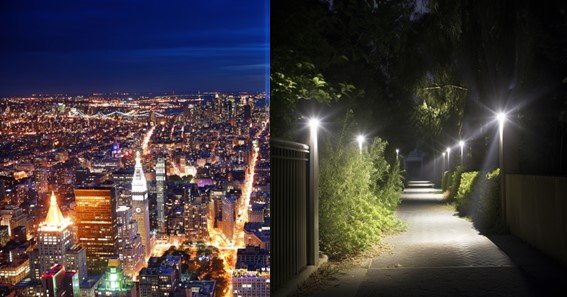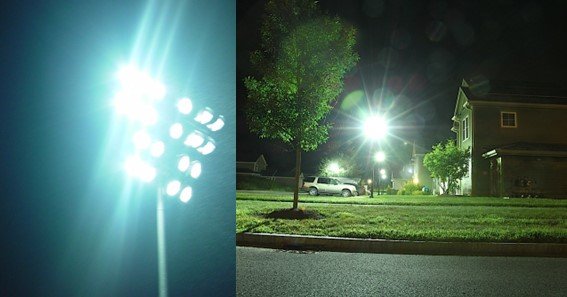Light pollution refers to the excessive or misdirected artificial light that brightens the night sky and interferes with natural darkness. It affects not only our view of the stars but also wildlife, ecosystems, and human health. Let’s explore the different types of light pollution and how they affect our environment.
Major Types of Light Pollution
- Skyglow
- What It Is: Skyglow refers to the brightening of the night sky over populated areas due to excessive artificial lighting. This glow washes out the stars and reduces visibility for astronomical observations.
- Impact: Skyglow is one of the most widespread forms of light pollution, making it difficult for people living in cities to experience natural darkness and stargazing.
- Glare
- What It Is: Glare is the excessive brightness that causes discomfort or visual impairment. It can occur when lights are too intense or poorly directed, making it difficult to see at night.
- Impact: Glare poses safety risks, especially for drivers, by reducing visibility and causing accidents. It can also lead to headaches and eye strain.
- Light Trespass
- What It Is: Light trespass occurs when unwanted light spills over from one property to another, such as a streetlight shining into a bedroom window.
- Impact: This type of pollution disrupts sleep patterns and privacy, especially in residential areas.
- Light Clutter
- What It Is: Light clutter is the excessive grouping of lights, often seen in urban areas with brightly lit advertisements, streetlights, and buildings. It creates confusion and makes it harder to distinguish between important visual cues.
- Impact: Clutter can reduce the effectiveness of lighting, leading to over-illumination and increased energy use, while also adding to skyglow.

Conclusion
Each type of light pollution, whether skyglow, glare, light trespass, or clutter, impacts the environment and our quality of life. By understanding the different types, we can implement better lighting practices to reduce light pollution and protect the natural beauty of the night sky.
FAQ
- What are the main types of light pollution?
The main types are skyglow, glare, light trespass, and light clutter. - How does skyglow affect the night sky?
Skyglow brightens the night sky, reducing the visibility of stars and making it difficult to observe celestial objects. - Why is glare dangerous?
Glare causes visual discomfort and reduces visibility, especially for drivers, leading to potential accidents. - What is light trespass?
Light trespass occurs when unwanted light spills over into areas where it is not needed, such as into homes or other properties. - How can light clutter be reduced?
Light clutter can be reduced by using shielded lighting, minimizing excessive outdoor lighting, and opting for smart lighting solutions.










